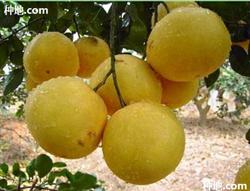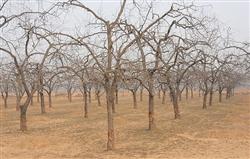Grapefruit (West Machine) harvesting method and how to store it?

Grapefruit (West Machine) harvesting method and how to store it? Please give a detailed introduction to grapefruit harvest can refer to the following methods: grapefruit harvest can be based on fruit maturity to determine the appropriate harvest time. The harvest time of grapefruit varies greatly due to the difference of climatic conditions in different cultivation areas, especially the difference of air temperature. The same variety can reach the harvest standard in the tropics in October, while in the middle subtropics, the lowest quality standard may not be reached until April of the following year. The harvest standard of storage fruit is that the pericarp turns yellow and juice bubbles are enlarged. The suitable harvest time can also be determined according to the fruit maturity. The harvest time of grapefruit varies greatly due to the difference of climatic conditions in different cultivation areas, especially the difference of air temperature. The same variety can reach the harvest standard in the tropics in October, while in the middle subtropics, the lowest quality standard may not be reached until April of the following year. The harvest standard of the fruit for storage is that the pericarp turns yellow with 2 bumps and 3 turns yellow, and the juice bubbles become fat and full, but the fruit has not yet softened. Therefore, when planting pond grapefruit in different climatic areas, the suitable harvest time of different varieties should be determined according to the main indexes to measure the maturity of grapefruit. The harvested and stored fruits were harvested in late November and finished in mid-December at the latest. Avoid injury during harvest, ventilate and lose water for 2 or 3 days after harvest, put on a 0.03 mm thick plastic bag, pack it immediately, store it in a cool and ventilated place and ship it one after another, and store it until April at the latest. Precooling may be harmful to precocious grapefruit and can cause serious damage to the peel. Avoid water cooling, as water cooling may increase pericarp damage. Grapefruit storage can refer to the following method: before storage, 20%-40% high carbon dioxide treatment of grapefruit can inhibit the chilling injury during 0 ℃ storage. It can also be treated with 20% carbon dioxide for 14 days to reduce the sunken rate of grapefruit peel stored at 4.5 ℃ for 8 and 12 weeks. Single fruit packaging of grapefruit with shrink film can also reduce chilling injury. Coating with vegetable oil or vegetable oil-water emulsifier can significantly delay the occurrence of chilling injury during storage at 3 ℃ and reduce the symptoms of chilling injury. The grapefruit was packaged in a single fruit during the 34.5 ℃ treatment, and the fruits waxed or kept at 95% relative humidity had significantly less penicillium rot than those treated at low humidity during the subsequent cold storage. The chilling injury of freshly harvested grapefruit during storage at 17 ℃ for 5 days could be reduced after 0 ℃ storage. Grapefruit treated with 43 ℃ saturated steam for 25 minutes could kill all the Caribbean fruit fly larvae that invaded the fruit. Sometimes the peel needs to be turned green, and the condition is 28030 ℃, 900.96% relative humidity, adding 1mg / L ethylene indoors, the treatment time is 1mg / L for 3 days, and the green will fade naturally during storage. Click to get more pomelo planting techniques click to get more fruit planting techniques
- Prev

Pictures of planting techniques and management methods of grapefruit (grapefruit)
Grapefruit requires high heat and is suitable for planting at an annual average temperature of more than 18 ℃. It can be planted in places with an annual accumulated temperature of more than 10 ℃ and more than 6000 ℃, and high quality fruit can be produced when it is more than 7000 ℃. More cold-resistant than lemon, resistant to extreme lowest temperature-10 ℃. May appear-8 ℃ of the place can not be planted. Therefore, choose.
- Next

Please introduce the control methods of jujube diseases and insect pests in autumn and winter?
Please introduce the control methods of jujube diseases and insect pests in autumn and winter? It is best to have detailed operation methods for the prevention and control of diseases and insect pests of jujube trees in autumn and winter, which can be carried out with reference to the following methods: 1. Clear the garden: jujube rust, green blind stink bug, jujube moth and other diseases and insect pests overwintering in litter or weeds under the tree. Therefore, the jujube tree has lost its leaves.
Related
- Moge, come on! The staff of the peasant association in the producing area of cantaloupe were frightened when the crowd gathered.
- Causes and Solutions of low Fruit setting rate of Apple
- Symptoms and control measures of passion fruit virus disease
- Fruit growing lesson: how do apple orchards keep high yields?
- Can you build orchards in the mountains? What are the pros and cons?
- How to manage the coloring period of Crisson grape?
- This paper introduces the processing technology of two kinds of fig products.
- How much is a month for retired teachers in rural areas by 2020?
- How can strawberry planting increase sugar content? We should pay attention to management in many aspects.
- What are the cultivation techniques on how to improve the yield of golden fruit?

